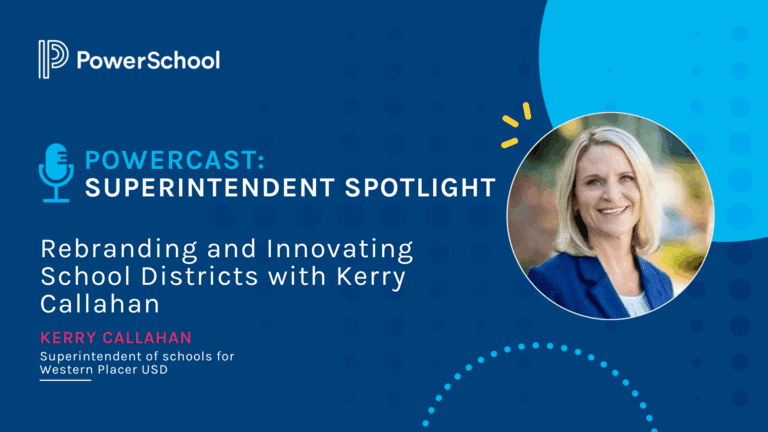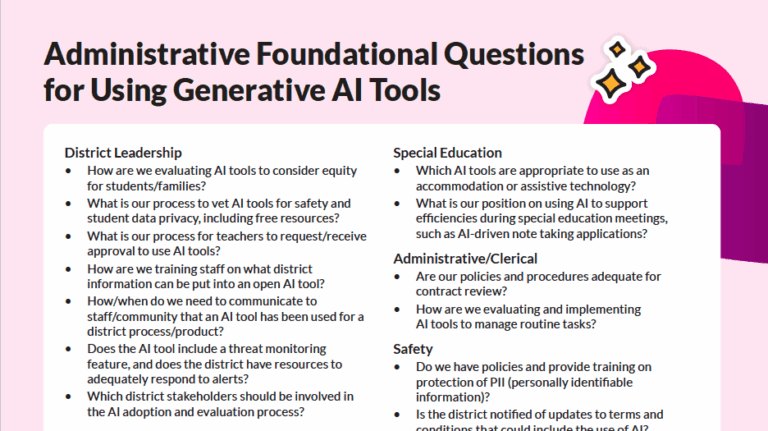By Letisha Marrero for NAESP, an ACSA Affiliate
Alas, Alcala is one of only four Latino teachers at a suburban Maryland school in which 50% of the student population is Hispanic. He sees his role as being an integral part of the multicultural community.
“I understand how children come to school in search of their ‘true identity,’ which seems to get lost in the process of cultural adaptation and assimilation,” says Alcala. But as a Latino teacher who teaches a subject other than Spanish, Alcala faces certain challenges.
“There’s an assumption,” he says, “that subjects that involve a deep understanding of math, technology, and science can’t be a subject taught by Latinos or other minority instructors.”
Common misconceptions hinder Latinx educators and students
Alcala’s sentiments are echoed in a new report about Latino teachers in the educator workforce. “Our Stories, Our Struggles, Our Strengths: Perspectives and Reflections From Latino Teachers” is published by The Education Trust. After conducting focus groups across the country, the authors reveal many recurring themes, experiences, and challenges that Latino teachers face. For example, Latino teachers spoke unequivocally about the importance of recognizing the diversity of Latin American culture and the need to address implicit bias.
Latinos are not a monolith: They do not share a single identity or experience. According to the U.S. Census Bureau, being Hispanic or Latino refers to “a person of Cuban, Mexican, Puerto Rican, South or Central American, or other Spanish culture or origin regardless of race.” Latinos differ vastly by race, country of origin, cultural traditions, immigration status, and more. A second-generation black Dominican has a completely different life experience than a Deferred Action for Childhood Arrivals (DACA) recipient from Mexico. Many Latinos who grew up in the U.S. may not even speak Spanish—contrary to another common misconception.
Latino teachers in Ed Trust’s sample felt that non-Latino educators often assume that all Latinos share the same cultural heritage. One teacher noted, “There is a whole gamut of diversity among Latino teachers, so we can’t just say, ‘Well, I get it because I’m Hispanic,’ when actually, making a pupusa is a foreign concept to me,” referring to the gastronomical difference between being Mexican and Salvadoran.
“We are not all the same,” says Daniel Velasco, Ed.D., a former teacher now working as an education advocate who was born in Peru, but grew up in Venezuela and Colombia before immigrating to the United States as a teenager. “But there’s more that brings us together than divides us.”
6 ways principals can support teachers of color
- Keep diversity top of mind when hiring staff and recruiting your leadership team. And remember that diversity encompasses race, ethnicity, religion, gender, sexuality, and identity as well.
- Create and support cohorts of teachers of color, both within the school and even other schools, when possible. These in-house support systems can ensure that no one or two people are shouldering the load.
- Develop mentorship and leadership opportunities for educators of color in the school (think department leads or team leads).
- Ensure that teachers have some instructional autonomy in their classrooms so they feel supported when honoring culture in the curriculum and classrooms.
- Understand your staff. Respect and genuinely listen to the teachers of color, particularly around workload and burnout, curriculum, autonomy, and support.
- Prepare yourself for what might often be uncomfortable, but ultimately courageous, conversations on race, racism, and cultural differences between staff and students.
Whether it’s the political tumult of DACA, which affects millions of undocumented students and their parents, or the humanitarian crisis in Puerto Rico and its refugees, Latino pride, empathy, and culture permeate this country. And Latino teachers share a common, collective struggle to provide a high-quality education that prepares their students for a rich, fulfilling life beyond the classroom. As one Latino teacher in the study put it: “I want to help build the best problem-solvers and critical thinkers possible, because those are the two elements that we need to really prepare our kids for this crazy world.”
Latinos are underrepresented in the classroom—and administration
America’s student body is experiencing an inevitable cultural shift. According to the U.S. Department of Education, students of color are expected to make up 56% of the student population by 2024. Currently, the Latino elementary and secondary student population is 25% and growing—even more so in states such as California and Texas. And yet, the elementary and secondary educator workforce is still overwhelmingly white. In fact, the department’s most recent national Schools and Staffing Survey (SASS) showed that 82% of public school teachers identified as white. This figure has hardly budged in nearly two decades.
While Latino teachers are the fastest-growing population entering the U.S. teaching workforce, they comprise just 8% of all teachers (up from 3% in 1987). This lack of teacher diversity deprives many Latino students of the experience of having a role model who “gets” them. Just as unfortunately, non-Latino students miss the benefit of learning from someone with a different background who can help shape their worldview.
Research shows that all students benefit from a diverse educator workforce. Fortunately, more is being done to recruit teachers of color. But why don’t more Latinos become teachers? “You can’t be what you can’t see,” says Velasco, the education advocate who currently serves as vice president of strategy and programs for Latinos for Education—a free membership organization of more than 1,500 professionals in the education space that seeks to identify and connect Latino educators and develop their careers. “If you don’t see people who look like you, it’s hard to find the social capital. If you don’t have a baked-in network, such as being a Harvard or Teach for America alumni, you’re stuck.”
Layla Avila, CEO/executive director of Education Leaders of Color (EdLoC) says her organization sees the implications of lack of diversity as it relates to the leadership pipeline. “You don’t see Latinos as principals, superintendents, or state chiefs,” Avila says. According to SASS, just 10% of public school principals are black and 7% Latino. Avila says there are a handful of Latino No. 2s, or assistant principals.
“Usually, it’s not until somebody taps you on the shoulder and says, ‘You could actually lead this system’ … that opens up that world of possibilities. We need system leaders to be thinking about their bench.”
Unspoken expectations burden Latinx educators
Velasco started out as a K–2 teacher in San Jose. He remembers being expected to deliver translations for the entire school, and wondering, Am I the token translator, or a kindergarten teacher? This sentiment is echoed throughout the Ed Trust report. Teachers don’t usually receive additional compensation for providing translation services, so it’s an extra that’s often added to bilingual teachers’ already full plates.
Some teachers, including Alcala, don’t mind. “I’m honored to serve my school and my community doing extra duties like translating in parent-teacher meetings,” he says. “My workload can be sometimes overwhelming, but I do it because I like it, and I find a noble purpose in doing so.”
But Avila says unspoken expectations can also be intimidating, especially for first-year teachers. “We need to be sure we are setting up new teachers for success—not adding on to their workload,” she says. “As a new teacher, I got the struggling English learners in a second- and third-grade combo class. How hard is it just to have one grade as a first-year teacher? Are you even equipped? Do you have the instructional materials that you need? Those things are more important. Compensation doesn’t matter if the workload isn’t realistic.”
Raquel*, a teacher from The Education Trust’s Los Angeles focus group, almost buckled under the pressure. “I taught in South Central L.A. for two years. I was actually going to leave the teaching profession because it was so terrible,” she says. “That’s kind of what happens to first-year teachers: They funnel you to those high-need schools that really need the most experienced teachers; but those experienced teachers choose to be elsewhere.”
Building a pipeline of Latinx educators
So, where can school leaders find and develop this Latino talent pool? According to the Hispanic Association of Colleges and Universities, Hispanic Serving Institutions (HSIs) prepare 90% of Latino teachers, building a critical pipeline to diversity in the educator workforce. Some states, such as Illinois, Georgia, and Texas, have created community-based Grow Your Own (GYO) programs that seek to develop paraprofessionals, teacher aides, classroom assistants—often people of color—into potential teachers.
Schools can also build partnerships with local universities. For example, Camino Nuevo Charter Academy in Los Angeles has a student population that is 82% Latino; and similarly, their teaching staff is incredibly diverse—just 18% white. One of their recruitment strategies is through a partnership with Loyola Marymount University that encourages Camino Nuevo alumni to earn a college degree, then go to Loyola to get their master’s, and be placed back at Camino Nuevo as a teacher. It’s paying it forward while the student comes full circle. “I am sure we have talent everywhere,” says Ana Ponce, Camino Nuevo’s CEO.
“The question is, how can we give more opportunity to teachers of color, to those who are serving kids of color?”
Talent aside, Latino and black teachers are leaving the workforce at much higher rates than their white peers. That’s why recruiting is not enough. Retaining and developing these teachers is just as important. Improving teacher working conditions by providing more autonomy in the classroom, providing more supplies and resources, and giving teachers more of a say in schoolwide decisions can make a difference. At Camino Nuevo, retention strategies include pairing new teachers with existing teachers. That strategy gives new teachers a direct line to someone to ask questions and helps with the onboarding process.
Principals make a difference, too. Alcala says his relationship with his principal is responsible for much of his success. “She understands the cultural approach methodology I use to build a positive rapport with my students, not only as a math instructor but in my role as a mentor,” he says. “She knows that I’m very sensitive to the emotional and academic needs of my students and understand their concerns from a cultural perspective. Her support nurtures a positive learning environment in a diverse and multicultural school.”
If students are the future educators of America, shouldn’t the classroom reflect the rich tapestry of America? Principals who are aware of their community’s social and cultural diversity, and demonstrate leadership that promotes inclusion, tolerance, and acceptance, will be more effective in reaching teachers, parents, and students alike. And one small challenge from Alcala: “Why not dare to learn the language that most students speak? At least try it for fun.”


































